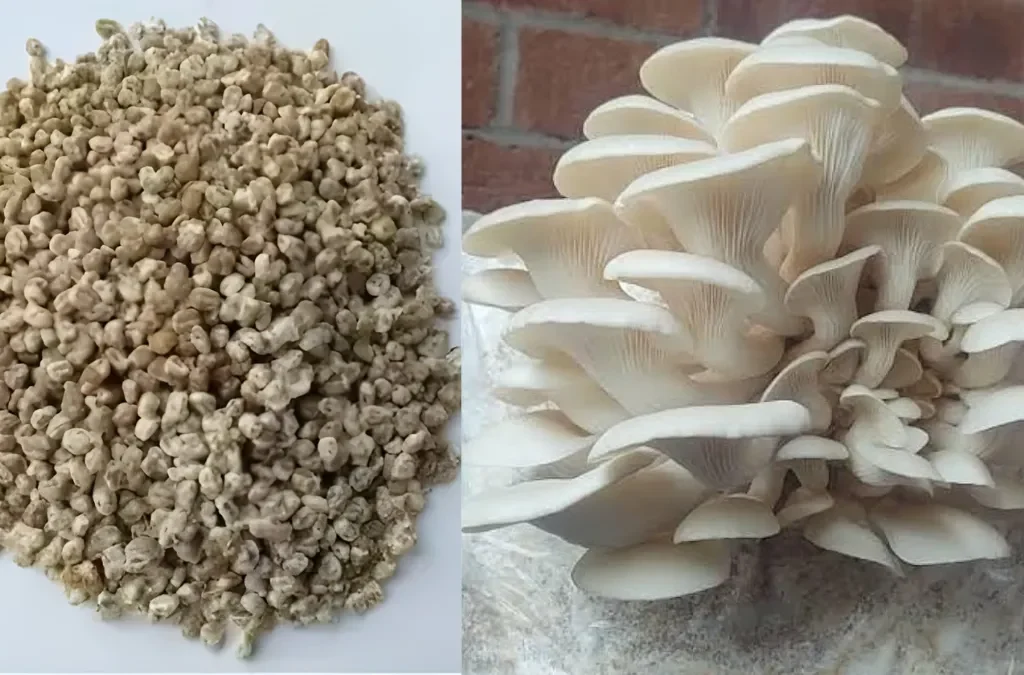Grow Mushrooms at Home Easily- Mushrooms are no longer just something you buy at the store they’re now one of the easiest and most rewarding crops you can grow at home.
Whether you’re in a city apartment or have a cozy suburban home, indoor mushroom farming lets you enjoy fresh, organic mushrooms year-round.
In this 2025 guide, you’ll learn how to grow mushrooms at home step by step, what equipment you need, and how to make your mushroom garden fully organic.

Why Grow Mushrooms at Home in 2025?
Indoor mushroom farming has become one of the top gardening trends in the U.S. People love it because mushrooms grow fast, don’t need sunlight, and take very little space. Plus, growing your own mushrooms ensures they’re pesticide-free, organic, and loaded with nutrients.
With rising grocery prices and the popularity of sustainable living, many Americans are choosing to grow their own food indoors and mushrooms are the perfect crop for that.
Best Mushroom Varieties for Home Growing
Not all mushrooms grow well indoors. Here are some of the easiest and most popular varieties for home cultivation in 2025:
- Oyster Mushrooms: Fast-growing, delicious, and ideal for beginners.
- Button Mushrooms (White or Brown): The most common variety, great for indoor kits.
- Shiitake Mushrooms: Have a rich flavor and grow best on logs or sawdust blocks.
- Lion’s Mane: Known for its unique texture and health benefits for the brain.
These varieties thrive in a controlled indoor environment, making them perfect for kitchen or basement farming.
Supplies You’ll Need
Before starting, gather a few basic supplies. Most of these are easily available online or at local garden stores in the U.S.
- Mushroom spawn or spores (depending on the type of mushroom)
- Growing medium (straw, sawdust, coffee grounds, or compost)
- Plastic containers or grow bags
- Spray bottle for misting
- Thermometer and humidity meter
- Dark, humid space (like a closet, basement, or grow tent)
Step-by-Step Guide to Growing Mushrooms Indoors
Step 1: Prepare the Growing Medium
Start by sterilizing your chosen substrate (straw, sawdust, or coffee grounds). You can boil it or microwave it to kill any bacteria. Once cooled, place it in your container or grow bag.
Step 2: Add the Mushroom Spawn
Mix your mushroom spawn evenly into the growing medium. Make sure it’s well distributed so the mycelium (the root-like structure of mushrooms) can spread properly.
Step 3: Incubation Period
Keep your container in a dark, warm space at around 70–75°F (21–24°C). Over the next 2–3 weeks, the mycelium will grow and colonize the medium. You’ll see white thread-like growth spreading through the substrate that’s a good sign!
Step 4: Initiate Fruiting
Once the substrate is fully colonized, lower the temperature to 55–65°F (12–18°C) and increase humidity. You can do this by misting water several times a day or using a humidifier. Provide some indirect light mushrooms don’t need sunlight but a little light helps them form properly.
Step 5: Harvest Time!
In about a week or two, small mushroom pins will start appearing. Let them grow for a few more days until they reach full size. Gently twist and pull them from the base avoid cutting with a knife as it can damage the next batch.
Tips for Successful Organic Mushroom Farming
- Use organic substrate: Choose chemical-free straw or coffee grounds for a cleaner crop.
- Maintain humidity: Mushrooms love moisture. Mist regularly but don’t overwater.
- Avoid contamination: Keep your hands and tools clean. Any mold or bacteria can ruin the batch.
- Recycle substrate: After harvesting, you can compost the used substrate for your garden.
By following these eco-friendly methods, you can enjoy fresh, healthy mushrooms all year long.
Health Benefits of Homegrown Mushrooms
Mushrooms are packed with vitamins, minerals, antioxidants, and protein. They help strengthen your immune system, support brain health, and can even improve gut health.
Since you’re growing them at home, you get all these benefits without worrying about pesticides or artificial preservatives.
Cost and Time Investment
Starting an indoor mushroom garden is affordable. A basic kit costs around $20–$40, and you can expect your first harvest within 4-6 weeks.
Compared to buying organic mushrooms from grocery stores, home-growing is a cost-effective option that pays off in the long run.
Common Mistakes to Avoid
- Too much sunlight: Mushrooms grow best in dim light.
- Low humidity: Dry air will stop mushrooms from forming.
- Poor ventilation: Make sure there’s light airflow to prevent mold.
- Ignoring contamination: If you see green or black mold, discard that batch immediately.
Conclusion
Growing mushrooms at home in 2025 is easier than ever. With just a few supplies, you can create your own organic indoor mushroom farm and enjoy fresh, flavorful mushrooms anytime.
It’s sustainable, fun, and perfect for anyone looking to eat healthier or explore urban gardening.
So, grab a kit, set up your grow space, and watch your homegrown mushrooms flourish!
FAQs: Indoor Mushroom Farming 2025
- How long does it take to grow mushrooms at home?
Most mushrooms are ready to harvest within 4 to 6 weeks, depending on the variety and growing conditions. - Can I grow mushrooms without a kit?
Yes! You can use spawn and a suitable substrate like straw or coffee grounds. However, beginner kits make the process easier. - What’s the best place in my home to grow mushrooms?
Choose a dark, humid, and cool area such as a basement, garage, or closet. - Do mushrooms need sunlight?
No direct sunlight. Mushrooms grow best in dim light or indirect light conditions. - Are homegrown mushrooms safe to eat?
Absolutely as long as you’re growing edible varieties and maintaining hygiene during the process.